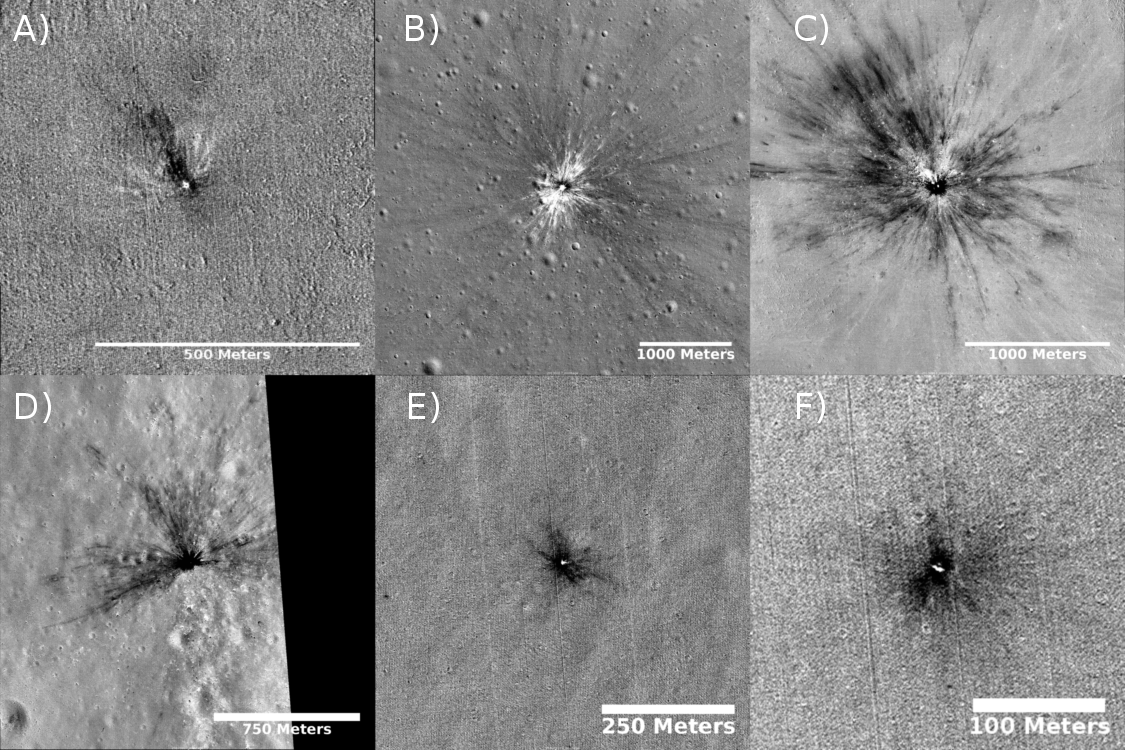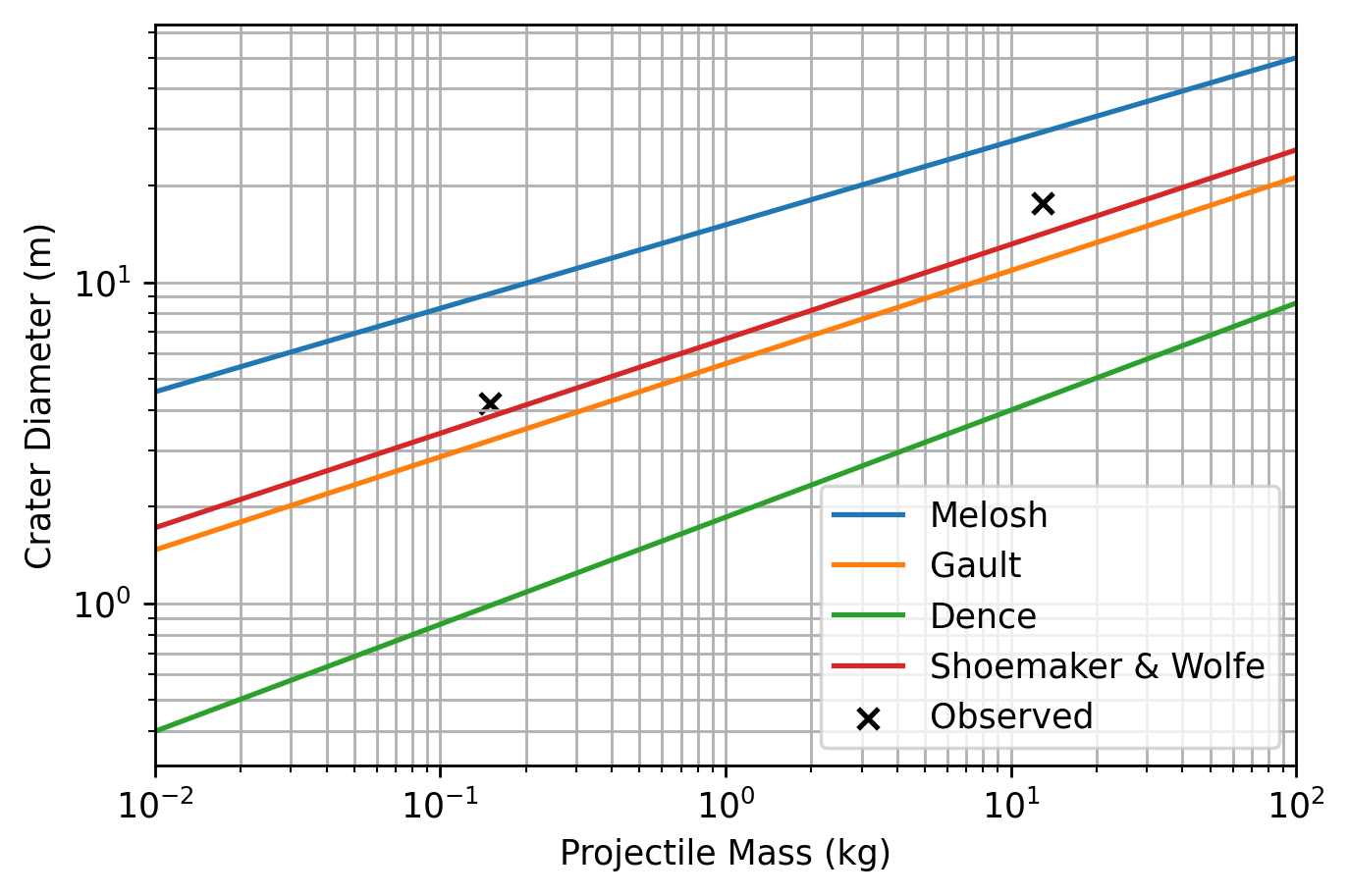The Resultant Craters from Lunar Impact Flashes
- 1Université Paris Cité, Institut de Physique du Globe de Paris, CNRS, Paris, Île-de-France, FR (sheward@ipgp.fr)
- 2Aberystwyth University, Institute of Maths, Physics and Computer Science, Aberystwyth, UK
- 3University of Leicester, School of Physics and Astronomy, University Road, LE1 7RH, Leicester, UK
- 4Université Côte d'Azur, CNRS--Lagrange, Observatoire de la Côte d'Azur, Nice, FR
Introduction
Impacts are one of the most destructive processes in the solar system, and impact craters have been identified on almost every type of solar system body. The lunar surface is covered in craters ranging from 2500 km in diameter, down to sub-millimetre scale. Lunar impact flashes (LIF) are caused by incandescence during an impact, and can be observed by ground based telescopes. Over 650 LIFs have been observed within literature [1,2,3], but despite this large volume of data, only 3 freshly formed craters with documented LIF have been located previous to this work. Such craters are important, as they serve as ground truth data for both the refinement of the luminous efficiency, η, typically taken as between 10-2 and 10-4, and for analysing which crater scaling law is most accurate at the scale of the observed craters.
Method
PyNAPLE is software we developed to locate the resultant crater within Lunar epoch, of an observed LIF [4]. Using the >650 LIFs available in literature, we applied constraints to filter out the unconfirmed events, and to prioritise the higher energy events, which had the highest probability of being detected with PyNAPLE. In total, this left 22 LIFs to be processed with PyNAPLE.
Results
After processing the 22 LIF events, there were sufficient LROC images to locate the freshly formed craters for six new events, as well as the three already identified within literature[4,5,6]. For one of these events, two candidate craters were found. Additionally, two unlinked craters were located during the search, however comparing the formation window of these craters to the database of LIFs, no candidate formation events were identified. A selection of six of these craters is shown in Fig. 1.

Figure 1: Six of the craters located from LIF observations by PyNAPLE.
Analysis & Discussion
For each of the 9 craters with known formation event, the likely parent meteoroid stream for each event can be obtained by comparing the LIF location to the meteoroid streams that were active and visible to the impacting location at the time of impact. Identification of the parent stream gives an approximate value for the impactors velocity, impacting angle, and projectile density.
Using the calibrated brightness of each flash, a value for the luminous energy, Elum, can be obtained for each event. Using an estimate for η, the total kinetic energy of the impactor for each event can also be caluculated, KE = Elum / η.
The crater scaling laws are several equations which all attempt to relate the kinetic energy of an impactor to the rim-to-rim diameter of the formed crater. As they were mostly derived from explosive tests, their accuracy at the <100m scale of these craters is unknown. Using two of the found craters, which share a parent meteoroid stream and therefore share similar properties, we can evaluate the accuracy of the most popular scaling laws, as shown in Fig. 2. From this comparison, as Shoemaker & Wolfe [7] most closely fits the data, we can conclude it is the most accurate at this range. This equation does not exactly fit, however, and while there are several factors that could contribute to this, such as the estimates for projectile density,target density, impactor velocity, and angle, the single most likely factor is the poorly constrained luminous efficiency.

Figure 2: The comparison of four popular scaling laws, using two of the located craters with same parent meteoroid stream as ground truth.
Under this assumption, a more accurate value for the luminous efficiency can be calculated from the observed craters. This can be done using a rearrangement of the crater scaling laws, to work out the required KE for the observed crater diameter, and subsequently using the observed luminous energy of the impact flash to calculate η = Elum / KE.
Performing this for each LIF linked impact crater, after outlier removal, produces an average value of η = 0.017. While this is slightly larger than the typically used values of between 10-2 and 10-4, the difference is close enough that this could be the result of small inaccuracies in the other parameters used, such as impact velocity, or projectile density. The inaccuary of the scaling law used would also effect this value; as more LIF-linked craters are obtained, and a greater statistical dataset is formed, a re-evaluation of the crater scaling laws, and possibly the derrivation of a new equation, is necessary for this work.
Bibliography
[1] Xilouris et al. (2018) A&A 619, A141 [2] Madiedo et al. (2015) Planetary and Space Science, 111, 105 [3] Suggs et al. (2014) Icarus, 238, 23 [4] Sheward et al. (2022). MNRAS, 514(3):4320–4328 [5] Robinson et al. (2015) Icarus , 252, 229 [6] Robinson, M., (2014) Another New Crater! Webpage: http://lroc.sese.asu.edu/posts/810 [7] Shoemaker & Wolfe (1982) Satellites of Jupiter, 277–339
How to cite: Sheward, D., Avdellidou, C., Delbo, M., and Cook, A.: The Resultant Craters from Lunar Impact Flashes, Europlanet Science Congress 2024, Berlin, Germany, 8–13 Sep 2024, EPSC2024-782, https://doi.org/10.5194/epsc2024-782, 2024.